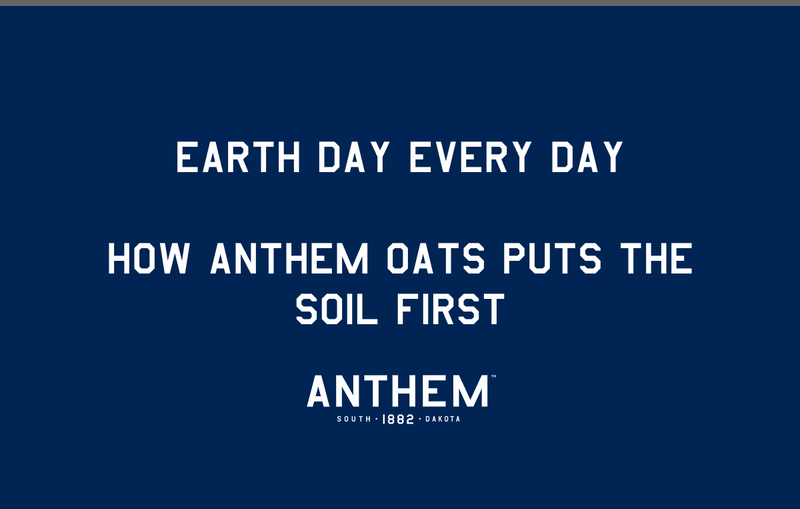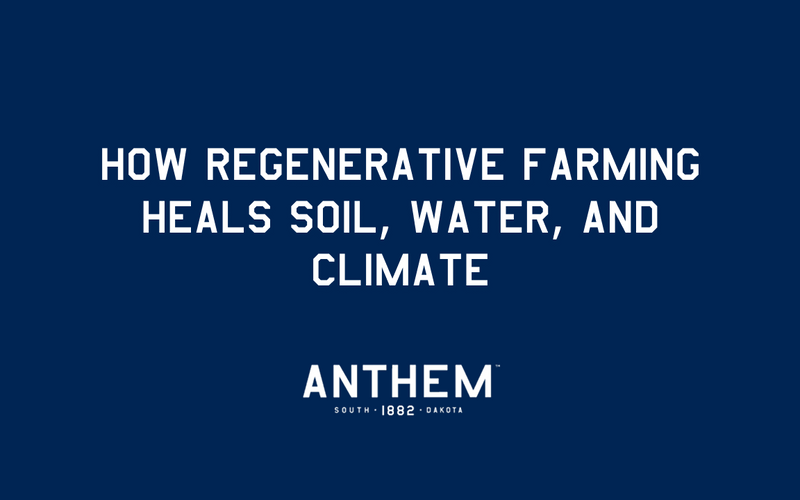
For many people, Earth Day is a single square on the calendar. A day to plant a tree, join a clean-up, or share a post about sustainability. For us, it’s something we live and breathe every single day of the year.
On our farm, the health of the soil is the heartbeat of everything. It determines whether our crops thrive or struggle, whether our community has clean water, and whether future generations can continue farming. That’s why “soil first” is the foundation of our philosophy. Every seed we plant, every decision we make, and every harvest we bring in is guided by the question: Will this leave the land better than we found it?
The Living World Beneath Our Feet
Most people see soil as dirt. We see it as alive. Beneath every oat we grow is a microscopic metropolis: billions of bacteria, fungi, protozoa, and earthworms all working together to sustain life. They cycle nutrients, break down organic matter, store carbon, and create pathways that help roots find water even in dry seasons.
The science behind this is compelling. Regenerative practices like cover cropping and no-till have been shown to sequester 0.5 to 0.7 tons of CO₂ per acre each year, and advanced methods can reach 3 to 4 tons. That’s like pulling the emissions of a passenger car off the road for every two acres farmed regeneratively. But it’s not just about climate impact, healthy soils are also more resilient to extreme weather. They hold more water during drought and absorb heavy rains without flooding, giving crops a better chance in unpredictable conditions.
We’ve seen firsthand how a thriving soil ecosystem changes everything. Fields where we’ve built organic matter over time produce stronger, healthier oats. They resist disease, withstand harsh weather, and deliver a richer, more consistent harvest. That’s why every decision we make begins with what’s happening underground.
Regeneration in Practice
Our farming approach is equal parts tradition and innovation. The knowledge passed down from our great-great-grandfather is blended with modern science to create systems that restore the land.
Crop rotation is one of our most powerful tools. By changing what we plant in each field from season to season, we avoid depleting the same nutrients year after year. This natural balance keeps the soil fertile and reduces pest pressure without relying heavily on synthetic chemicals.
Cover cropping is another cornerstone. During the months when our oats aren’t in the ground, we plant other species to protect the soil. These plants prevent erosion, add organic matter, and feed the microbial life that keeps the soil ecosystem strong. On average, cover crops can increase soil organic matter by 1–2% annually, which may not sound like much, but that change can dramatically improve water retention, nutrient cycling, and long-term fertility.
We also practice reduced tillage, which means disturbing the soil as little as possible. Tilling breaks up the natural structure, disrupts microbial life, and releases stored carbon into the atmosphere. By limiting how often and how deeply we till, we preserve those underground networks and boost microbial biomass, research shows by as much as 50%.
And when these practices work together, the impact multiplies. Studies have found that combining cover crops with no-till can store about 1 metric ton of carbon per hectare each year, a measurable climate benefit alongside healthier crops.
More Than Just Yields
We farm for more than yield per acre. Of course, producing a healthy crop is important, but we measure success by what we leave behind as well as what we take off the field. Healthy soil holds more water, meaning our crops can survive longer between rains. It filters the water that flows into nearby streams, keeping it cleaner for wildlife and communities downstream.
Healthy soil also hums with biodiversity: pollinators, birds, and beneficial insects all thrive in and around our fields when the land is in balance. This balance means fewer pest outbreaks, stronger plant health, and more resilient fields year after year.
And there’s another measure of success: legacy. By putting the soil first, we’re ensuring the farm’s future and protecting its ability to feed people for generations.
Why It Matters at Your Table
When you choose Anthem Oats, you’re making a connection. Every oat in every bag or cup came from our fields, planted and harvested by our family’s hands. You’re not getting commodity oats shipped in from anonymous sources. You’re getting oats that have been nurtured in soil we’ve spent decades improving.
That means your breakfast is part of a bigger story: one where farming is a climate solution, where waterways run cleaner, and where rural communities thrive because the land beneath them is healthy and productive. It’s nourishment you can feel good about, in your body and in your conscience.
Our Promise for the Future
We know farming will never be static. Seasons change, markets shift, and weather patterns become more unpredictable. That’s why we approach agriculture as an ongoing conversation with the land. We listen, we adapt, and we keep learning.
Earth Day isn’t a marketing campaign for us, it’s our way of life. It’s in every seed we plant, every cover crop we sow, and every decision we make about how to care for the land. We’ll keep putting the soil first because we know that’s where every good harvest begins. And we’ll keep proving that the most powerful way to protect tomorrow is to care for the foundation beneath our feet today.
One season. One harvest. One honest bowl at a time.
From our soil to your table, every oat tells the story of care, commitment, and regeneration.
Be part of that story. Choose Anthem Oats



